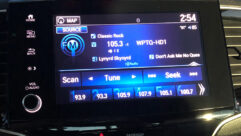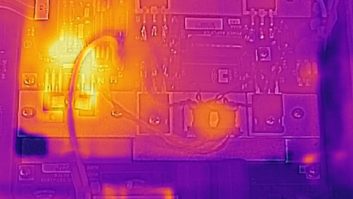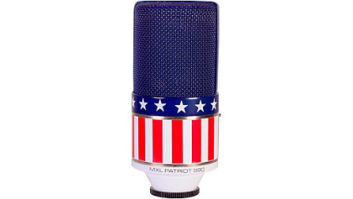Fall is a beautiful season in much of the United States, and it gives us a chance to winterize our sites before the really nasty weather strikes.
One of the biggest concerns at this time of year is to keep equipment secure when it comes to rodents, snakes and insects. We’ve long suggested the use of mothballs to discourage rodents and snakes, but Michael Bostic, a former broadcast engineer, now with Networx Corp. in Rochester, N.Y., writes that he routinely used mothballs to discourage bees and, particularly, wasps.
Not only were the mothballs stashed in transmitter buildings and antenna coupling networks, but Michael put several inside LNB covers as well as the equipment hub in his uplink dish.
The supply was refreshed in the spring. No more bee surprises!
When I did contract work, we were called to a station that lost its satellite signal every evening at dusk. You guessed it; as nighfall approached, wasps returned to the nest, their body mass effectively attenuating the satellite signal. The discovery nearly knocked me off the ladder.
I don’t know an engineer who likes bees, much less angering them by opening the “door” to their home.
. . .
In the July 4 Workbench, the use of electronic rodent repellers was discussed. The repellers appeared to scare off snakes as well.
M. Chepko of Veni Vidi Video in Atlanta wrote that snakes are essentially deaf. In fact, three little bones that reside in the human ear are used in snakes to articulate their jaws, allowing them to swallow larger mice or rats.
(click thumbnail)Fig. 1: Handy Modifications to an LPB Transmitter
Snakes do “feel” low-frequency vibrations, however, so they are aware when you walk up to them. But the high-frequency sound emitted by the electronic repellers would go unnoticed.
More than likely, the snakes disappeared because their food source – the mice or rats – left the area.
By the way, the Indian snake charmers actually are controlling the cobra’s movement by the motion of the flute, not the “music”!

. . .
Ray Fantini works with Salisbury State University’s radio and television department, and does some contract work on the side.
During a recent visit, he showed me some modifications he made to an LPB low-power transmitter that one of his stations was using for post-sunset power operation.
Ray’s first modification was to add a relay that interrupted the AC power switch. The relay is connected after the on board on/off switch, and uses 24 VDC to turn the transmitter on and off by remote control.
Figure 1 shows the top of the LPB transmitter, with the relay mounted and a barrier strip that was added to provide both transmitter on/off control and status for the remote control.
(click thumbnail)Fig. 2: Arrow 1 is where the old pass transistor was. Arrow 2 points to wires that run to the new pass transistor on the heat sink.
The status function was wired off the 5 VDC bus inside the transmitter, and is wired to the status control on the Gentner remote control. The 5 VDC bus gives a “high” status when the transmitter is turned on.
Ray’s second modification was to “heavy-up” on the power supply pass transistors. In the 60-watt version shown, each side has its own 28 VDC power supply. In the original design, the pass transistor is mounted on the side of the case without a heat sink. Ray found that the original transistors had a high failure rate, shorting because of the high collector peak current. Fuses would blow, as would the pass transistors.
Ray chose transistors with a higher current rating, an Ic rating of 30 amps, typically. Arrow 1 in Figure 2 shows where the old pass transistor was located. Arrow 2 in the same figure points to the wires that have been soldered to the board, and run up to the new pass transistor, mounted on the heat sink.
In the second cabinet, Fig. 3, there was more room to mount the heat sink inside the chassis. Again, the arrow points to the wires, leading to the heat sink, and the pass transistor terminals.

. . .
(click thumbnail)Fig. 3: In the second cabinet, there was more room to mount the heat sink inside the chassis.
Looking for obsolete semiconductors?
Dave Hershberger, principal engineer with ADC Broadcast Systems Division, offered a good tip on the radio-tech page at broadcast.net recently.
Rochester Electronics in Massachusetts can be contacted at (978) 462-9332, or online at www.rocelec.com .

. . .
Bob Hoffman is the market chief for Bonneville International’s WIL(FM), WSSM(FM) and WRTH(AM) in St. Louis. Bob offers this tip to anyone who plans to install new audio processing gear, or even a delay system, which could create a bothersome delay for studio talent monitoring the direct air signal.
Bob recently implemented a simple solution, using the Broadcast Tools Smart Silence Monitor.
The air console audio is fed to a sidechain processor and looped back to the studio air monitor through the normally closed contacts of the Smart Silence Monitor relays. This allows the talent to hear a “pseudo air monitor.”
A tuner (through a distribution amplifier) feeds the silence sensor input and the normally open contacts of the SSM relays. When an off-air condition occurs, the SSM relays will switch to feed direct tuner audio to the studio monitor, alerting the talent of the condition in seconds.
Bob has wired a second output of the SSM to drive an audible alert in the engineering shop.
. . .
Got a useful tip or suggestion? E-mail or fax your submission to the address or number below, and when printed, you’ll qualify for SBE recertification credit.
Submissions for this column are encouraged, and qualify for SBE recertification credit. Fax your submission to (703) 323-8044, or send e-mail to[email protected]











